This is a continuation of the development of a simple, relatively foolproof, astigmatism, field curvature, and field tilt test for lens screening. The first post is here.
I’m trying to refine my off-axis test procedures with the idea of getting them posted in a single document and inviting users to try them out. I’m sure that real users will cause me to make changes, and I’d like to get that process started.
I’ve decided that the raised-sinusoid Siemens Stars offer no real advantages in these kinds of screening tests, where the extra aliasing and false color introduced by the binary targets are actually useful in making fine discriminations. They make a sensitive test even more sensitive, which may in itself be a problem, but I hope to be able to deal with that by coming up with a procedure for evaluating the images. I’ve also decided that a target with multiple stars with different numbers of spokes is not the best use of space. A single large star seems to be sufficient. More spokes are better than fewer spokes until the spokes get so close together in the center of the target that the lens can never come close to resolving detail there. I tried a 140-spoke 22.5×22.5 inch star and decided that that was too many spokes. For this test, I settled on a 100-spoke star.
I printed a high-res version of the above star with an image size of 22.5×22.5 inches on a piece of 24×30 paper. I put the Sony 12-24 mm f/4 lens on a Sony a7RII body.
I plotted minimum distances for a FF sensor:
I’ll want to test the lens wide open, so that means that I’ll need to be at least 7 meters away with the lens set to 12 mm, and about 12 meters back with the lens set to 24 mm. I decided to run all the tests at 13 meters. With a target as big as the one I printed, I shouldn’t have to move in closer for the 12 mm images.
Here’s the scene at 24 mm:
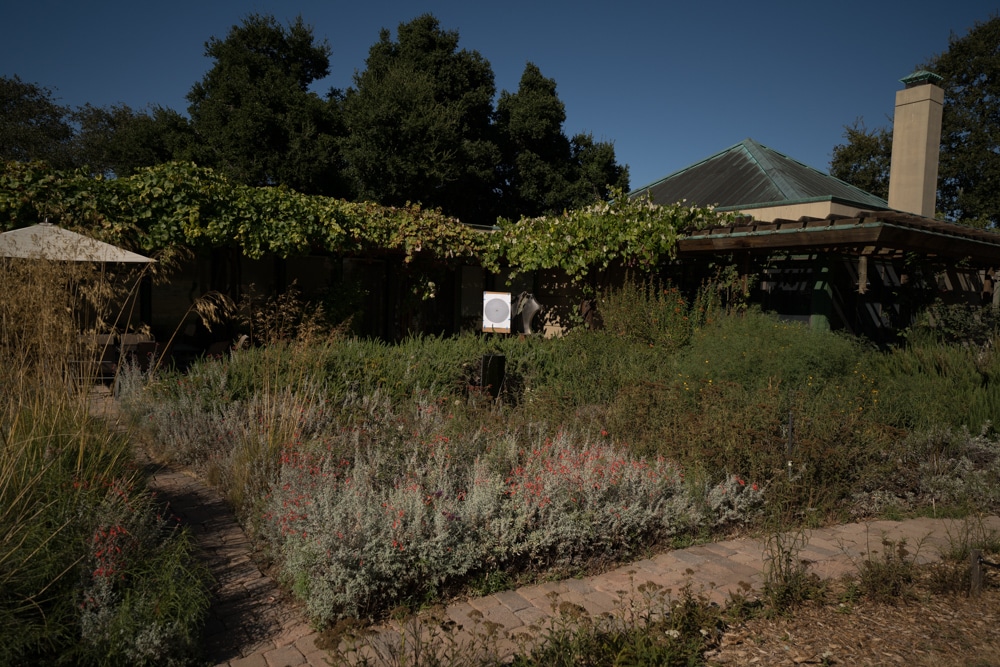
The reason it looks so dark is that I wanted the background of the target to be in no danger of clipping.
Here’s a blowup of the center of the image:
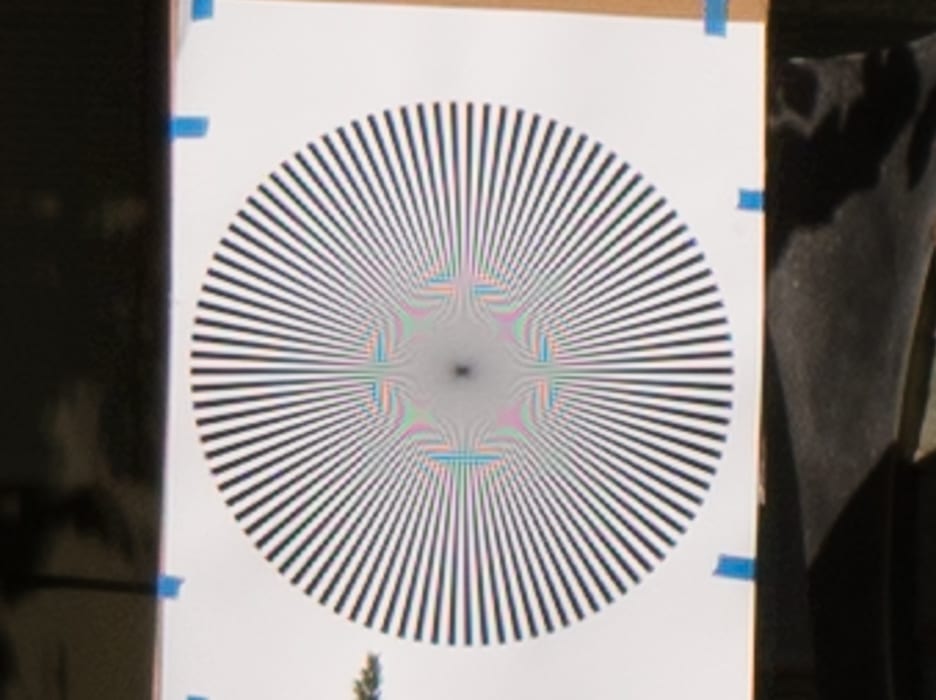
I’m going to make all the crops the same size, 339×253 pixels. That way you can get a sense of the resolution as the focal length changes. The reason the crop looks generous in the above image is that the star will get bigger in the corners, and I’m allowing for that. Note that the aliasing and false color is not very strong in the above image. That’s because 24 mm is not the 12-24’s best focal length. It’s still sharp enough to resolve detail beyond Nyquist, however.
Now we’ll go around the periphery of the frame in a clockwise direction starting at the upper left-hand corner.
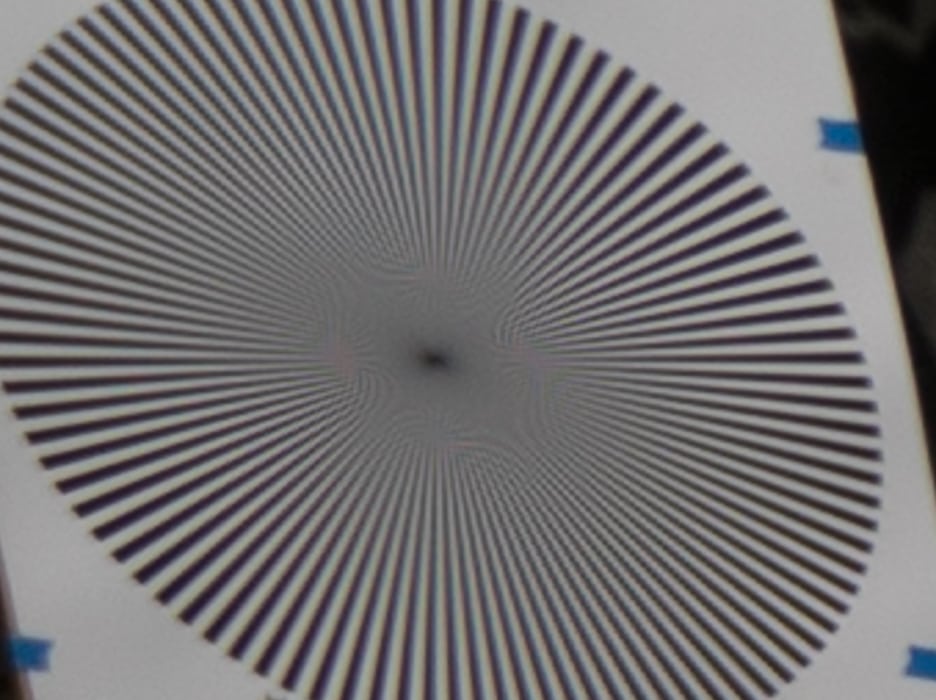
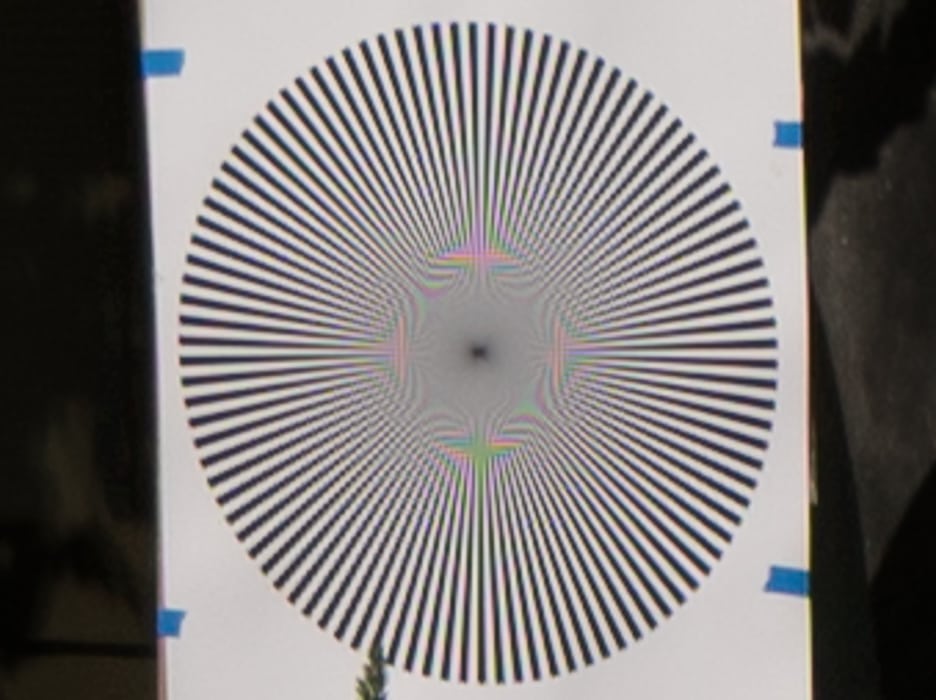
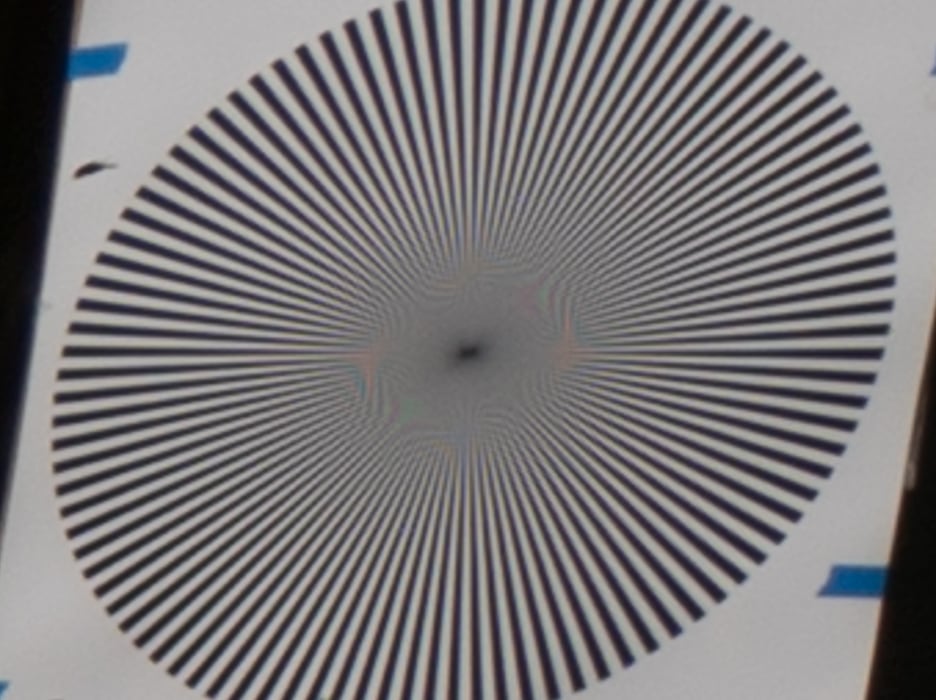
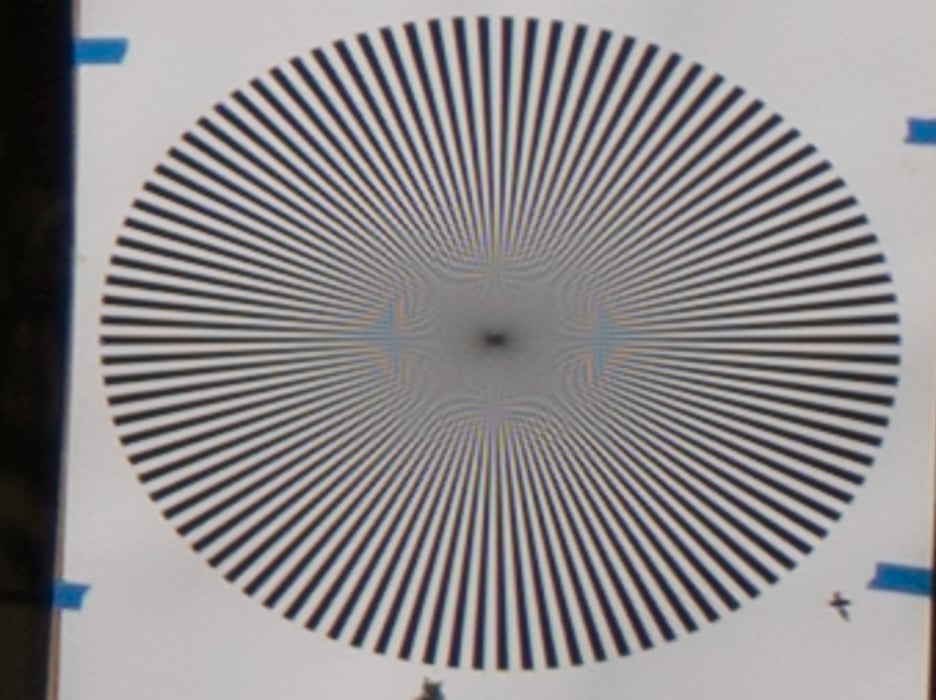
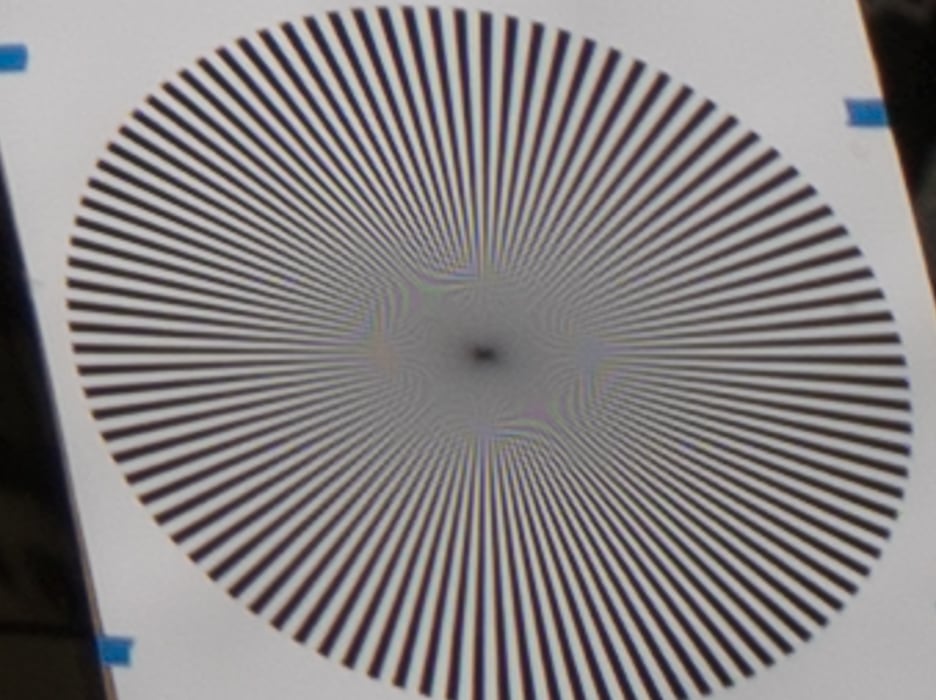

There’s something a bit strange about the image above. Note that it’s sharper in the SW/NE direction, even though that is neither saggital nor tangential. Astigmatism?
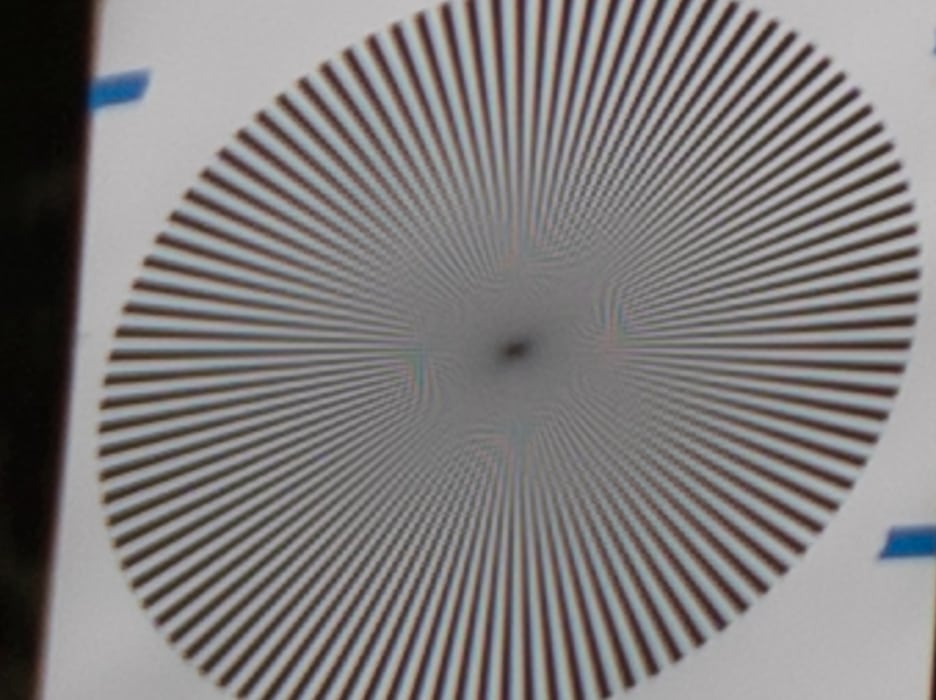
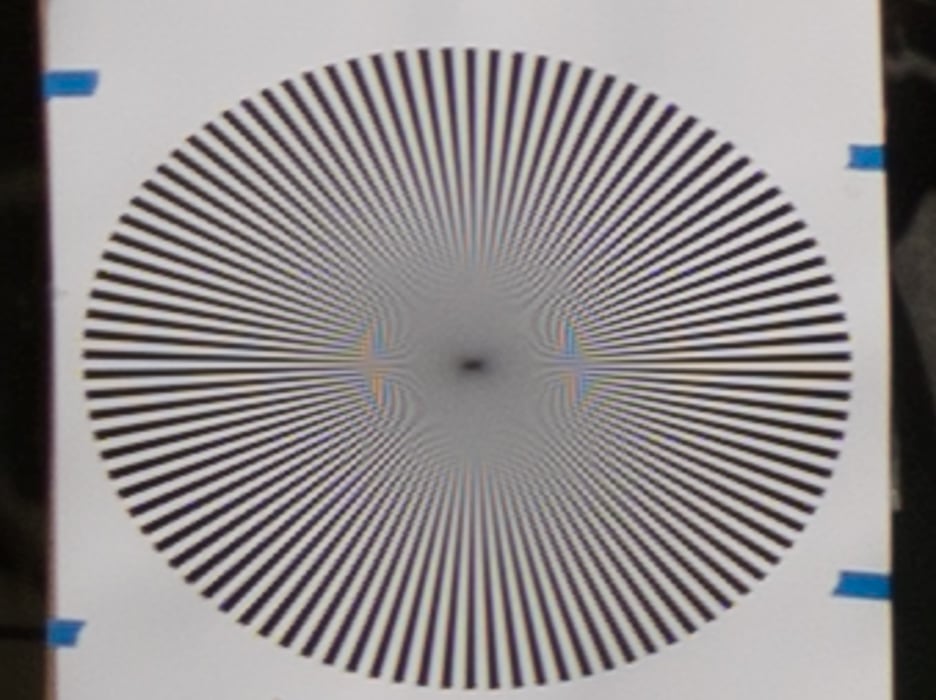
You can see that the resolution is worse in the corners, so much so that the lens can’t generate any significant false color. You can see aliasing in all four corners though, which I think is truly remarkable for a lens like this. There are no significant variations in sharpness among opposite pairs of stars. Which is what you look for in this kind of test.
I’ll show you the results at 18 mm and 12 mm in the next post.
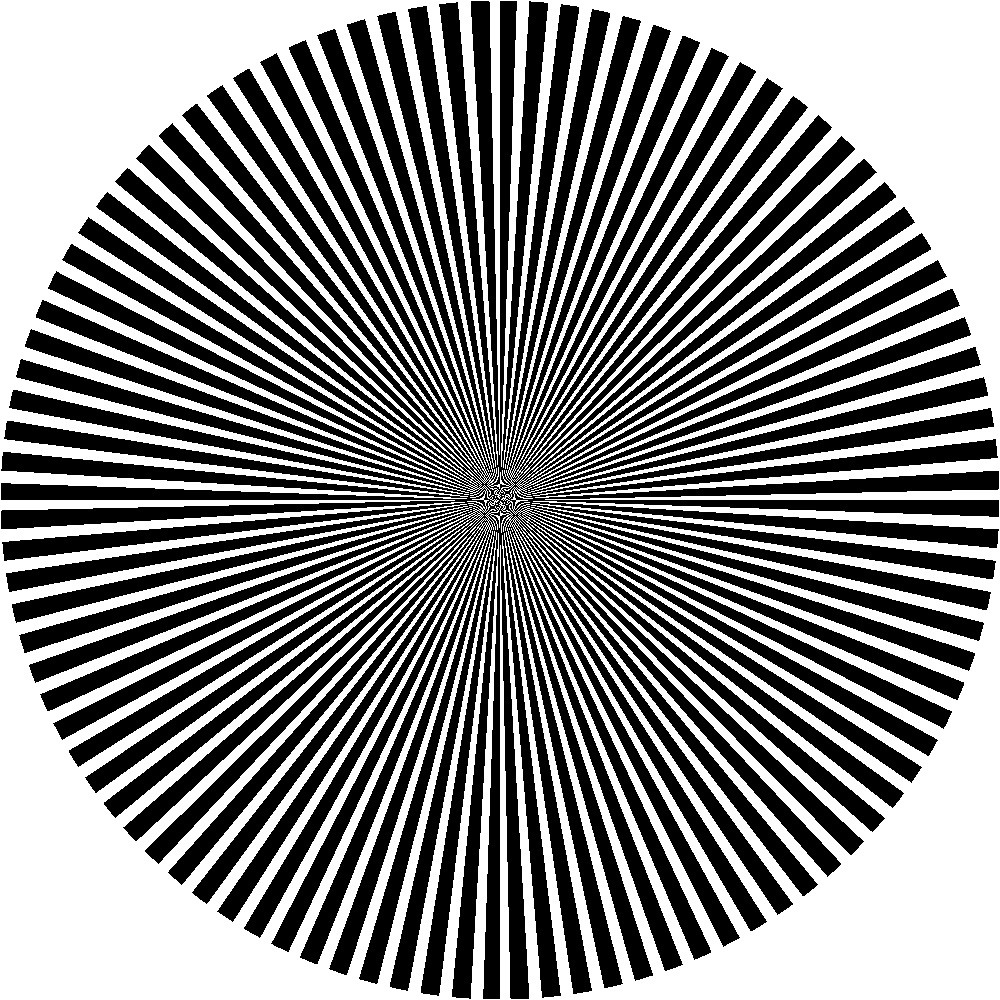
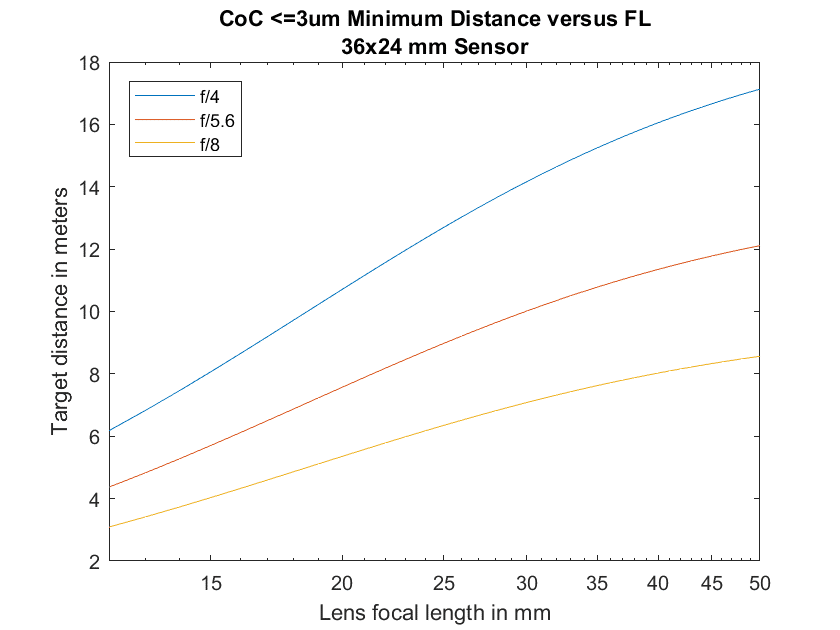
Brandon Dube says
The lower middle image looks to contain either astigmatism or coma to me. The magnitude is not great enough that my eyes can distinguish them.
There is a greatest loss of detail, to me, along the center-left extent of the star. Normally an odd/asymmetric loss of contrast like this would imply coma, but the relative frequencies that are taken away look to be more the work of astigmatism.
What does the (full, 2D, and centered) FFT of the image look like? Astigmatism and coma are more easily separable in that domain.